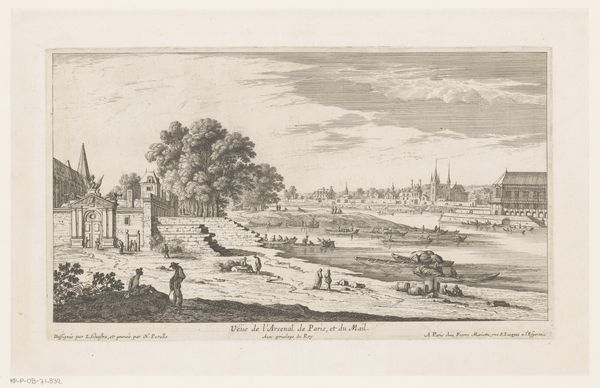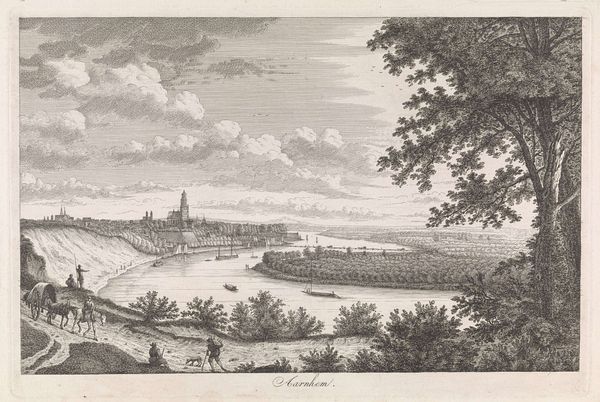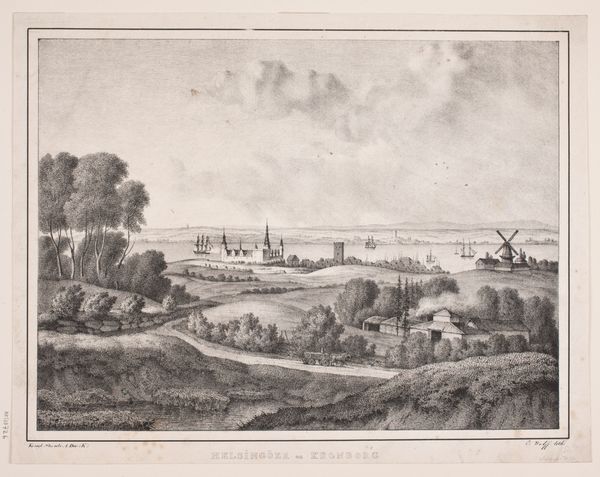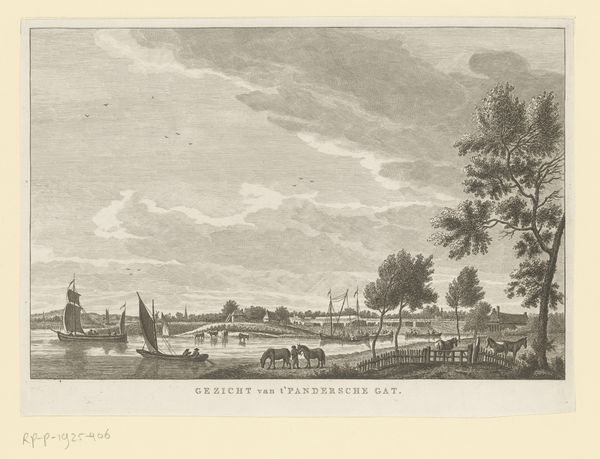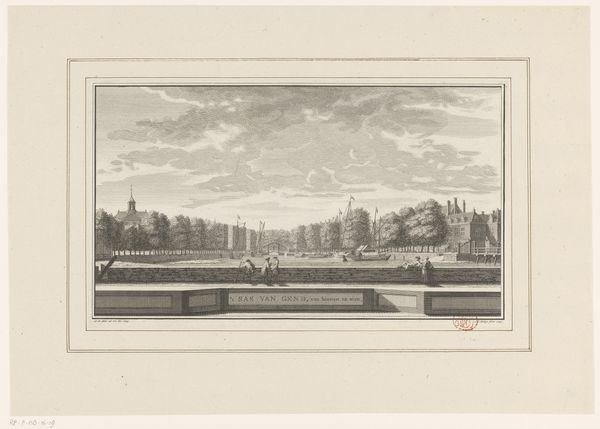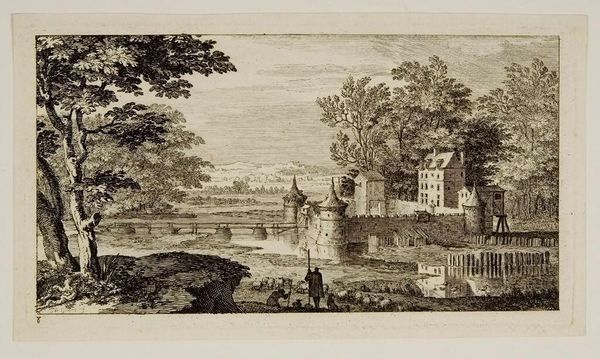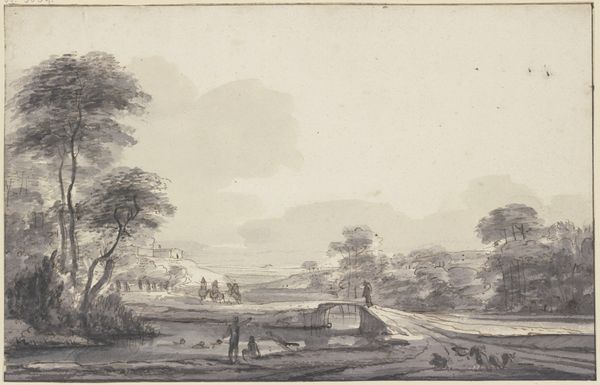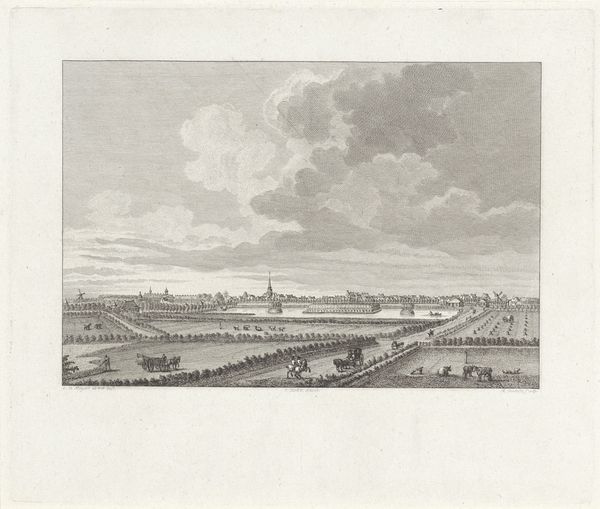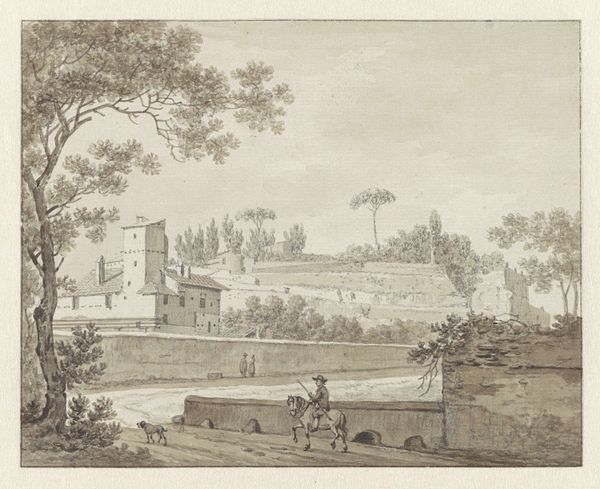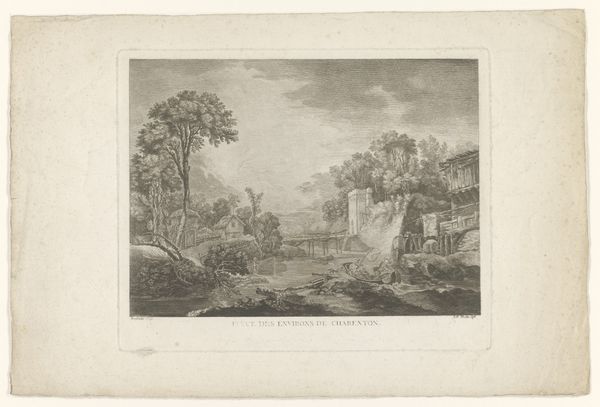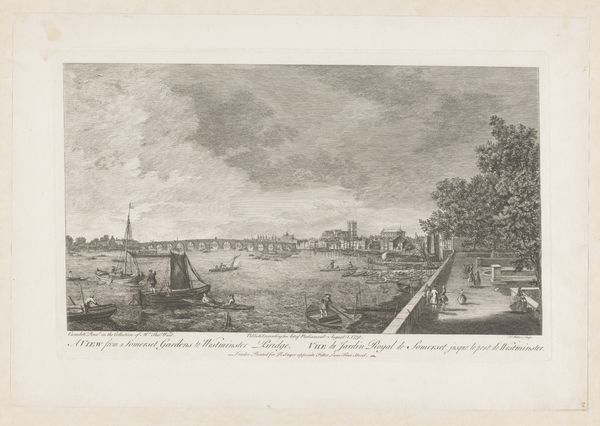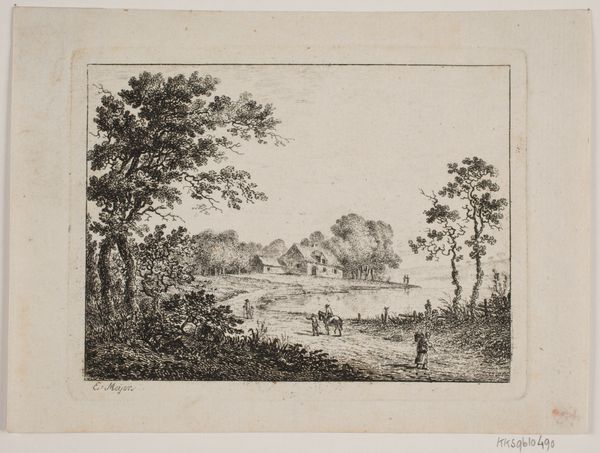
Dimensions: height 223 mm, width 287 mm
Copyright: Rijks Museum: Open Domain
Curator: This is an engraving titled "Gezicht op Dresden," or "View of Dresden," created by Reinier Vinkeles sometime between 1751 and 1816. It’s part of the Rijksmuseum’s collection. What are your initial thoughts? Editor: The hazy light immediately strikes me. It gives the scene a somewhat nostalgic, idealized feel. And the composition, with the figures in the foreground, certainly draws your eye into the urban landscape beyond. Curator: Yes, the foreground figures are interesting. Their presence invites the viewer into a Romantic encounter, participating almost as a witness, in their appreciation for the grandeur of the cityscape of Dresden. It brings forth cultural connotations, referencing the historical setting, but almost blurring the lines of a memory in the viewer's mind. Editor: And what can we interpret from Dresden as the central motif? Urban representations like this one served a powerful function. This particular portrayal no doubt played a role in constructing a vision of the city, shaping its identity for both inhabitants and those viewing from afar. Curator: Exactly! The bridge stands out, linking one world to another. In iconography, bridges frequently symbolize connections, transitions—almost a symbolic portal between the earthly realm and something more. The way the artist utilizes the shading adds dimension, further reinforcing the significance of the landscape within the print's composition. Editor: Indeed, but notice how it doesn't show the realities of urban life; rather, it gives an embellished narrative with a soft glow that aligns neatly within established picturesque tastes. It is as if it’s an illustration or emblem celebrating an orderly urban design, carefully curated, devoid of industrial disruption and presented within acceptable artistic codes. Curator: That order suggests societal values too. A sense of idealized harmony reflected both in the city’s structure and its connection to the natural environment. It speaks to ideas around civic pride, progress, but equally of Romantic introspection as humanity finds its place in a picturesque world. Editor: So, here we find Vinkeles actively molding history, presenting Dresden not just as a place, but as an idea. A visual rhetoric of what the city wanted to be seen as. Curator: Yes, visual emblems reflecting not just what Dresden *was,* but, significantly, how Dresden *wished* to be perceived through history's evolving gaze.
Comments
No comments
Be the first to comment and join the conversation on the ultimate creative platform.

